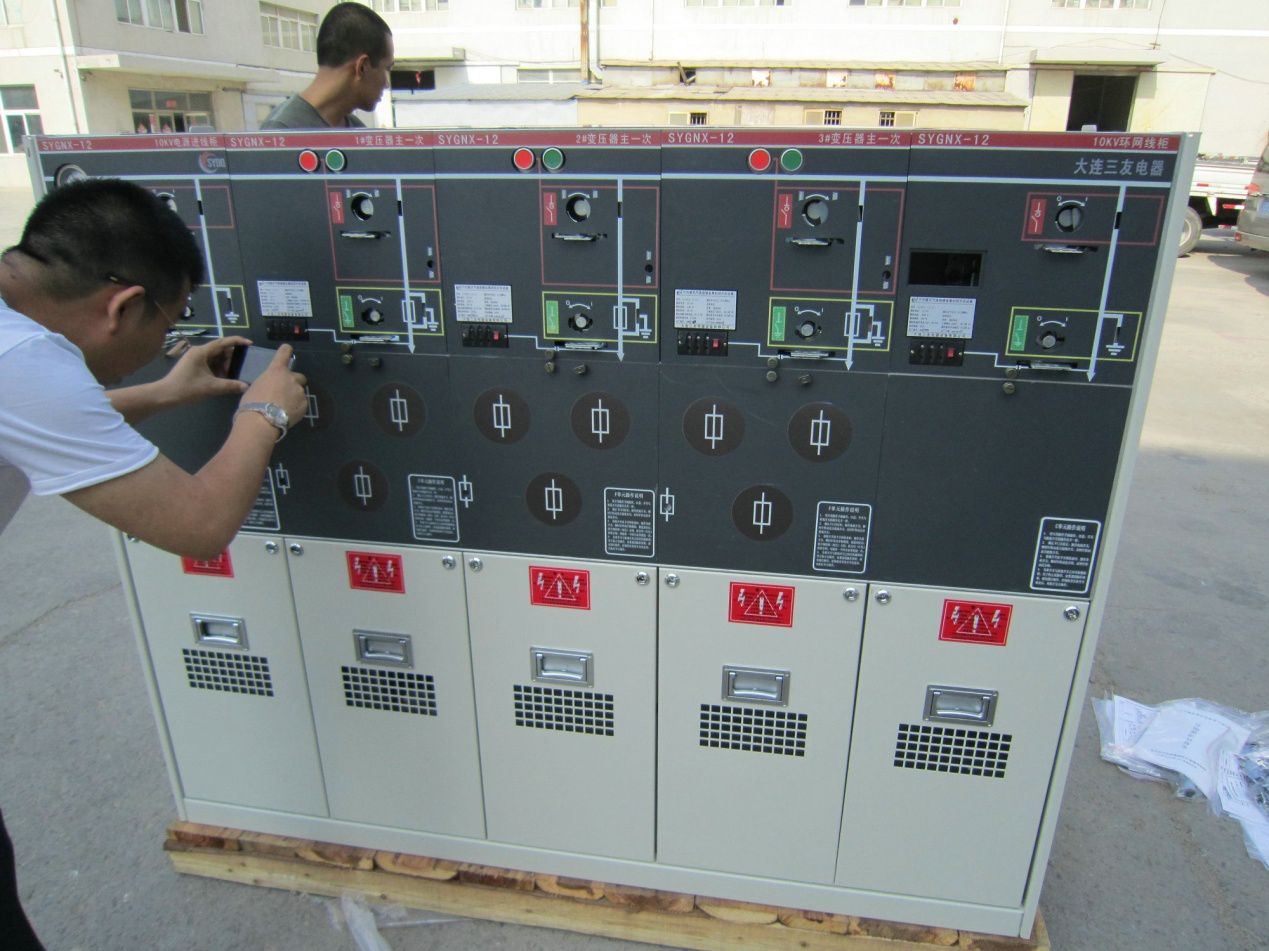Industry News
SHENZHEN YOUTECH INDUSTRY CORPORATIONApplication of plastic insulation materials in the electrical and electronic industry
Plastics for the electrical and electronic industry refer to the design and manufacturing technologies of plastic insulating materials, conductive plastics, pressure/thermoelectric plastics, and their materials and products used in the field of electrical and electronic engineering. The electronics and electronics industry consumes the third largest amount of plastics, second only to the packaging and construction industries. Here, we mainly introduce the application of plastic as an insulating material in the electrical and electronic industry.
Electronic Components
Electronic components are generally centered on connectors, coils, and sensing components, including filters, oscillators, and electronic components. The integration of these components and the emergence of surface finishing technology (SMT) have greatly increased the added value of electronic products.
Connector
Connectors can be manufactured using a variety of materials, such as PA, PBT, PET, etc., where the cost of connectors made with PA is lower. For example, Shanghai Jiejiejie's nylon product PAF23 has good processing fluidity and can be used to make thin-walled parts. With the diversification of parts and the requirements for dimensional stability and heat resistance, PBT materials can be used, and those with special requirements can be made of PC materials. Of course, PPS and LCP reinforced plastics with better heat resistance are also ideal candidates.
Coil bobbin
The coil bobbin is formed by welding coil wires and terminals. After the terminal insert is formed, it has special requirements for its insertion process, especially when the large coil is welded, so it can be made of PA, PBT or PC. Among them, PA and reinforced PA have the characteristics of high strength, high toughness, certain insulation performance, easy forming of thin wall skeleton and high production efficiency. With the development of relays, the requirements for miniaturization have been proposed. Therefore, PPS should be selected for materials that require short-term operation at 260 °C.

Resistor
The resistor acts as a load in the circuit to reduce the supply voltage and regulate the operating voltage. Plastics are used primarily in resistors to make components such as resistor bobbins, housings, and gaskets. The requirements for the plastic skeleton are: high mechanical strength, excellent electrical insulation properties, good heat resistance and dimensional stability. Commonly used materials are: polysulfone, PBT, injection grade phenolic powder.
transformer
Transformers are important electrical and electronic components that function to change voltage, transfer voltage, transfer power, and impedance matching. Plastic can be used as a skeleton, a wiring board, etc. in a transformer.
Enhanced PBT, enhanced PPS, etc. are all new high temperature engineering plastics. Their common features are good heat resistance, good solvent resistance, high strength and good dielectric properties. Enhanced PBT can be used in dry conditions for a long time at 150 ° C and short-term work at around 250 ° C. However, the PBT has poor heat resistance and it is not suitable for long-term work under hot and humid conditions.
Relay
Relays in the electrical and electronic industry play the role of automatic manipulation, supervision, regulation and protection. For example, a high-stability oscillator must be protected by a thermal relay to maintain a constant temperature.
The relay frame has the same requirements as the transformer frame. For example, higher heat resistance, sufficient strength, good dielectric properties, and the like are required. New engineering plastics are often used as backbone materials for relays due to their high production efficiency, good mechanical and dielectric properties. At present, relays have a trend of miniaturization, which requires a small size of the plastic skeleton, and the thinner the skeleton wall, the better, while ensuring the use requirements. Because this can reduce the volume of the wire package and reduce the length of the copper wire. For skeletons with a wall thickness of only 0.2 mm, materials such as PA and PP should be used.
In addition, the electric key is one of the important components of the relay. The application technology and function of the electric key are continuously improved, and the types of plastics required are also diversified. Generally, the electric keys require plastics with high heat resistance and dimensional stability, and are commonly used. There are PBT, PA, PET, modified PPO and so on.
Electrical Equipment
There are many types of electrical equipment, and the requirements are different. The requirements for insulating plastics are also different.
Low voltage electrical equipment
Electrical properties are not a critical indicator for insulating plastics used in low voltage electrical equipment and wiring structures because problems caused directly by dielectric properties are rare. However, the heat resistance and environmental suitability of insulating plastics, such as moisture, oil, solvent and weather resistance, are particularly important. Glass fiber reinforced PA, PBT and PC are commonly used low-voltage electrical thermoplastic materials, mostly used for housings, interior and exterior decorative parts. Low-voltage electrical appliances include circuit breakers, AC contactors, connectors, switch parts, junction boxes, plugs, sockets, and various terminals. As such, Haijie Jiejie's products PA66 BC6056B5P, PAM216T, PAF23, PBT BC4056 have been widely used in circuit breakers, AC contactors, connectors and other fields, and successfully provided material solutions for several world-renowned companies.
Medium and high voltage electrical equipment
Insulating plastics used under medium and high pressure (above 6kV) are mainly dependent on their electrical properties. Commonly used materials are thermosetting plastics.
Structural component
The electrical and electronic equipment structural components mainly include transmission components (gears, cams, bearings), fixing members (supports, brackets, handles, hinges, screws, etc.) and appearance components (such as casings, frames, covers, disks, etc.). In the past, these parts were made of metal. Because engineering plastics have the characteristics of small friction coefficient, good wear resistance and certain mechanical strength, plastics have been promoted and applied in wear-resistant and lubricated parts. In particular, the emergence of new high modulus and high strength carbon fiber composites provides good conditions for the application of plastics in structural parts.
Transmission structure
Gears are important transmission parts. The gears used in electronic equipment are mostly gears with little force and accuracy of 6"8 and 0.3mm" 1mm. It is well known that phenolic resin gears as thermosetting plastics have long been used. However, the widespread use of plastic gears is after the emergence of new engineering plastics. For example, a small-modulus (0.5 mm) bevel gear on an electronic scoreboard produced by a PC has a good long-term effect. Using PC instead of brass as the speed-adjusting gear on the eight-wire oscilloscope, the cost is reduced by 83%. Using PA instead of stainless steel to make a gear in aircraft electronic equipment, the work efficiency is improved by 14 times, the quality is reduced by 6"7 times, and the material price is reduced. In the case of a force of 2kg, the rotation is 20,000 times, and the tooth shape is intact. , to meet the use requirements.
The requirements for plastics for plastic gears are high bending strength, impact strength and fatigue resistance, good wear resistance, heat resistance and dimensional stability, low friction coefficient and low cracking. Commonly used plastics are: PA, POM, PC, enhanced PC, etc.
Bearings are important friction parts. Commonly used materials are: POM, PA, fluoroplastics, etc.
Cam mechanics are used to automatically turn the contacts of the appliance on and off, as well as to change the state of motion of the machine. The requirements for cam materials are the same as those for the above bearings. Commonly used plastics are: PA, POM and PC.
Appearance structure
The outer casing of the motor and power tool is usually made of glass fiber reinforced PA and ABS. Shanghai Jiejiejie's glass fiber reinforced PA products PAR206, PAR204T, etc., enjoy a high reputation in this field.
The outer casing of the electronic device requires a beautiful appearance, a certain strength and toughness, and a generally less stressed outer casing, such as a modified PS, ABS, PP, and foamed plastic.
Covers for electronic equipment are divided into large and small sizes according to their size. The former uses FRP and the latter uses PA, ABS and PP.
In the field of electrical and electronic industry, the use of electronic circuit components, printed circuits, couplings, and instrumentation equipment enclosures is increasing, and the field of application is constantly expanding. It is predicted that by 2010, with the growing market of commercial electronic devices such as personal computers and the development of technologies that are both energy-saving and material-saving, many electronic product structural components are developing in a short, light, and thin direction. Both quality and quality have raised higher requirements. In the future, insulating plastics for the electrical and electronic industry will develop toward low warpage, micro-deformation, high dimensional stability, high fluidity, high thermal stability, low gas content, high insulation and alloying. The emergence of new high-performance plastic varieties will surely play a greater role in the electrical and electronic industry.




